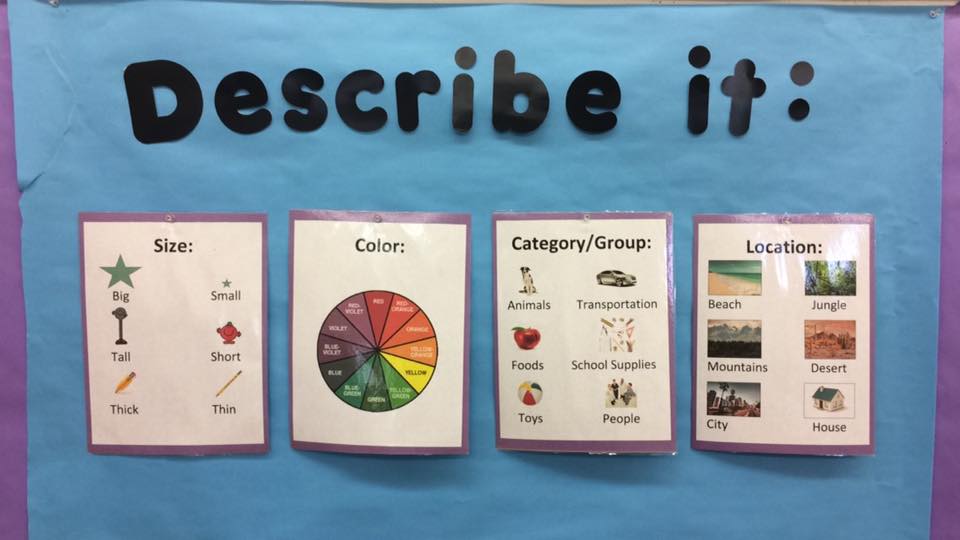One of the questions I am asked most frequently is, “How do you target language in the schools?” What I find is that most speech language pathologists work on grammar goals related to what teachers are already working on, and there is a major disconnect between differentiating our role as related service providers from the roles of teachers with regard to language intervention. Teachers teach grammar. Speech language pathologists determine where the deficits lie and select targets from there. What I tend to see is that my students with language disorders have limited vocabularies, which result in deficits with word associations and sparse grammatical output. They often demonstrate word retrieval challenges due to their limited vocabularies/semantic associations. For my bilingual students, this shows up ACROSS LANGUAGES. How do we treat this? I choose to teach students with these limitations how to describe. This enhances vocabulary, builds word associations, provides grammatical structure for utterances, and teaches an appropriate compensatory strategy for when they still cannot access the words they want to say.
Some tools I have created include visual aids, sentence frames, and visual organizers. I cannot stress enough the importance of using visuals to help these students. The visual aids I created follow English rules for adjectives. Native speakers understand that when describing, we say the size, color, category, and location of an item in that specific order (here is a link to a cool article about this phenomena). Here is a link to my visual aids (click here), shown at the top of this post on display in my room.
Students sit facing the visuals. I teach each visual individually, and then have students orally put phrases together. The hardest concepts to teach are categories, but they are the most important piece of the puzzle because they help students organize words semantically. I take my time teaching categories and generating specific items from categories. Once students understand categories, I often have them name as many words from a category as possible at the beginning of a session within a certain time frame (30 seconds, for example) and then attempt to recall these words at the end of the session. We aim for 7 items +/- 2. Generative naming tasks are often used with individuals who have experienced primary progressive aphasia, with good results shown in studies such as Henry et. al. 2008b (see citation below or click to be redirected to the article). Given that the task itself is challenging for our students with language disorders, I have applied it for use with them and have had excellent results since the underlying skill being taught is word retrieval.
In addition to posting these visuals on the wall of my room, I also use sentence frames and visual organizers. They are both currently free on my TPT store, just click here to be redirected. Students practice describing items, usually their class vocabulary words, using the sentence frames. I strongly recommend working on comparing/contrasting items using my visual organizer once students can generate grammatical descriptive utterances using the sentence frames, since this demonstrates stronger semantic understanding of words and our students are expected to compare and contrast throughout school (including during college).
For access to the visuals, sentence frames, and graphic organizers, please go to my TPT store here!
As always, feel free to reach out or ask questions.
Kelly Ibanez, Bilingual Speech Language Pathologist
Citations:
Beeson, P. M., King, R. M., Bonakdarpour, B., Henry, M. L., Cho, H., & Rapcsak, S. Z. (2011). Positive effects of language treatment for the logopenic variant of primary progressive aphasia. Journal of Molecular Neuroscience, 45(3), 724-736. (link here)
Henry, M. L., Beeson, P. M., & Rapcsak, S. Z. (2008). Treatment for lexical retrieval in progressive aphasia. Aphasiology, 22(7-8), 826-838.(link here)



